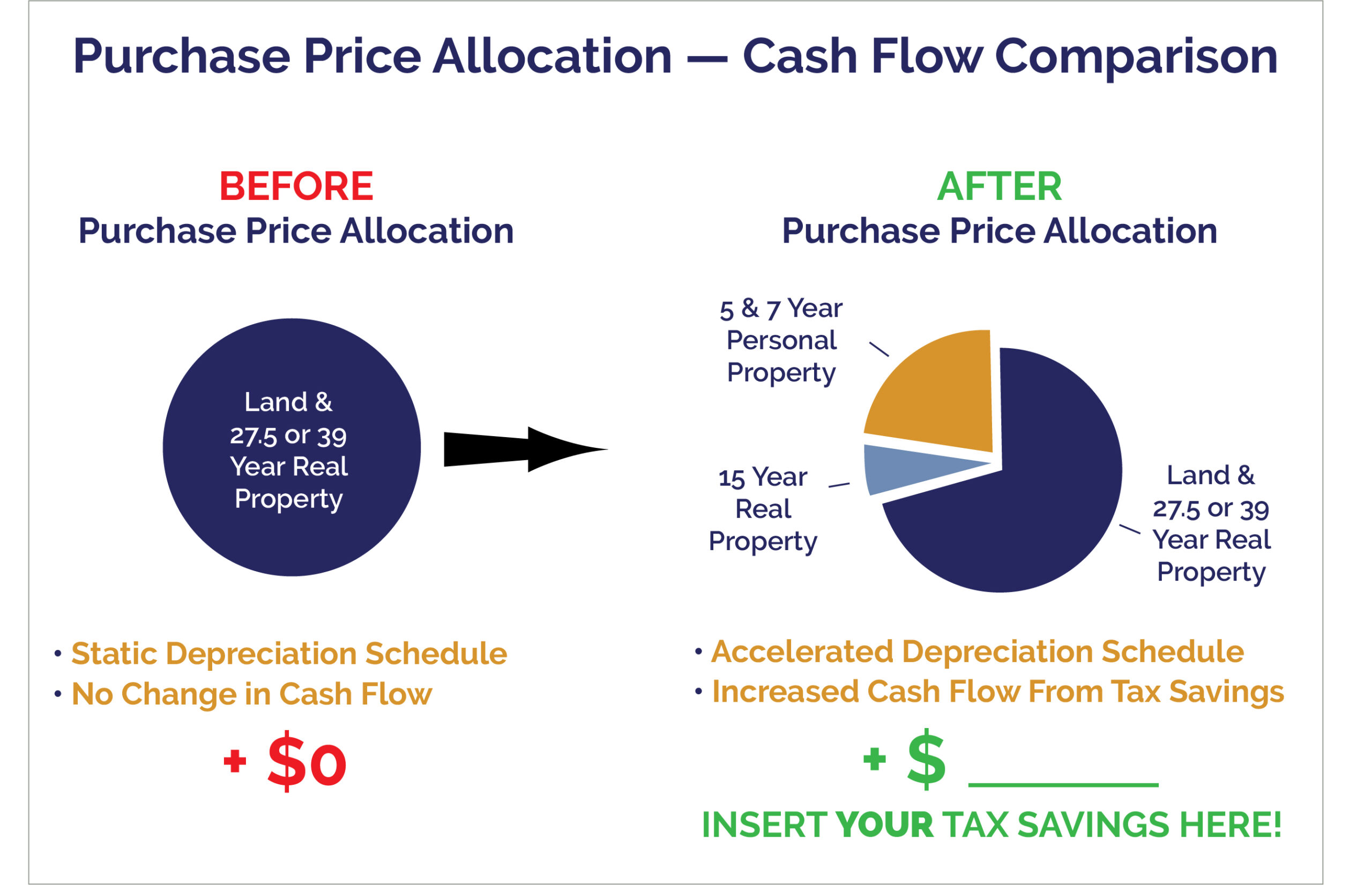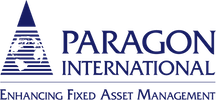Purchase Price Allocation
Purchase Price Allocation: Accelerate Tax Depreciation and Increase Cash Flow
Have you recently purchased a commercial building? A real estate Purchase Price Allocation can give you significant tax savings, increase cash flow and accelerate your Return on Investment. To maximize tax savings, buyers of buildings and improved property should allocate the transaction price between non-depreciable assets such as land, and depreciable assets such as buildings, building improvements, land improvements, and personal property.
The Allocation must be based upon the appraised Fair Value or Market Value In Use of all the assets acquired, balanced to the final purchase price. This establishes the basis for Federal and State income tax depreciation, which is deducted from taxable income, reducing income taxes, and increasing cash flow.
The below graphic illustrates how a purchase price allocation works and how much you could save.

Comprehensive Purchase Price Allocation for Property Acquisitions
Paragon’s comprehensive Purchase Price Allocation uses cost and value segregation methodology to separate the purchase price into different categories – land, land improvements, building, building improvements and personal property – to accelerate and maximize your tax depreciation.
Our services complement those of your accounting firm and are directed toward the following objectives:
- Optimize future tax benefits for buyers by providing the basis for maximizing future cash flow.
- Subsequent renovation of existing space generally involves removal of existing build out such as ceilings, floor finishes, light fixtures, ductwork, walls, wiring, plumbing, etc.
- Estimate the proper allocation and market value of real and personal property for local property tax reporting and assessment purposes.
- Estimate and segregate non-insurable portions of the property from the insurable portions, and develop current replacement costs for insurance purposes.
- Estimate realty transfer taxes prior to closing, and identify and value personal property exempt from such taxes.
- Create new fixed asset accounting records based upon verified physical inventory and new cost basis resulting from the purchase price allocation.
Based on our experience with a variety of different types of properties, here are examples of typical savings under today’s Bonus Depreciation tax laws:
| Property Type | Purchase Price | Personal Property | Taxes Saved First Year |
| Office Building | $20M | $ 5M | $2.0M |
| Retail Center | $15M | $ 3M | $1.3M |
| Hotel | $40M | $12M | $4.7M |
| Call Center | $15M | $ 6M | $2.6M |
| Manufacturing Plant | $50M | $15M | $5.9M |
| Distribution Center | $25M | $ 3M | $1.5M |
How to Maximize Your Tax Savings
Not all Purchase Price Allocations are created equal. To maximize the tax benefits of a purchase price allocation, it is important to keep in mind that different types of commercial properties have different types of depreciable fixed assets. Read our blog to learn more.
Ready to save money and increase your ROI? Contact us for a no-obligation consultation.
Success Story
A 100,000 sq. ft. cold storage warehouse facility was purchased for $11 Million. The detailed Fair Market Value allocation resulted in 5 year property of $2.4 Million and a 6 year tax savings of $750,000.
Sage Fixed Assets ROI Calculator
Not only can Sage Fixed Assets make your fixed asset management process more efficient, but it may help you save money, as well. Don’t just take our word for it: We invite you to see first-hand how Sage Fixed Assets solutions pay for themselves.
Cost Segregation Savings Calculator
The ultimate return on any investment (ROI) is the net cash flow realized after all expenses and costs have been paid, including Federal and State income taxes. We invite you to see first-hand how Cost Segregation solutions pay for themselves.



